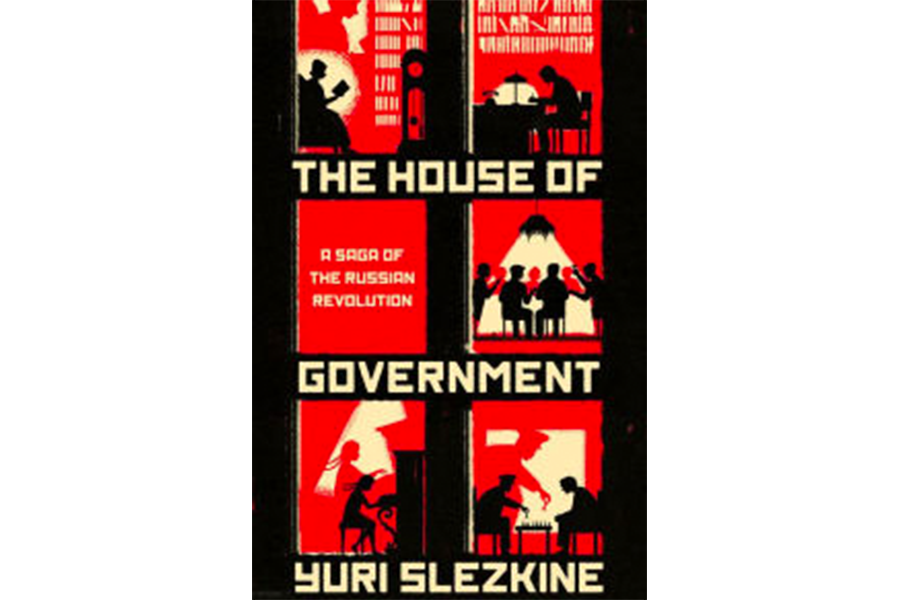'The House of Government' is packed with a fascinating tangle of true, uniquely Russian stories
Loading...
The subtitle of Yuri Slezkine's mammoth new book, The House of Government, is “A Saga of the Russian Revolution,” and this, combined with the book's wry variation on the standard opening disclaimer – “This is a work of history. Any resemblance to fictional characters, dead or alive, is entirely coincidental” – gives a clear indication of the nature of Slezkine's ambition here. The sheer size of the book, 1,000 pages in the US hardcover, shows the scope of those ambitions.
"The House of Government" will draw inevitable comparisons with other behemoths of Russian history, most notably Aleksandr Solzhenitsyn's "The Gulag Archipelago," but Slezkine's approach throughout his book makes it clear that he's also looking to fictional antecedents, cast-of-thousand doorstops like Vassily Grossman's "Life and Fate" and of course Tolstoy's "War and Peace." That key word “saga” is both a warning to the reader and a promise.
The book's title is not a euphemism but an actual place: a vast apartment building completed in 1931 on an embankment in the Moscow River just opposite the Kremlin. As a physical emblem and embodiment of the Communist dream, the House of Government was designed to be a world unto itself, with landscaped surroundings, 505 apartments, several spacious courtyards, its own movie theater, library, playhouses, daycare center, walk-in clinic, hair dresser, tennis court, bank, telegraph office, and furniture workshops.
The apartments were filled by a large cast of what Slezkine refers to as “the chief builders of the new world”: high officials of the party, economists, trade leaders, officers of the secret police, esteemed old Bolsheviks, state newspaper editors, a handful of fiction writers, and hundreds of support staff, from waiters and plumbers to janitors, armed guards, and dozens of managers.
And right from the beginning, as Slezkine notes, the place was also host to the games and laughter of children. “In the spring and summer of 1931,” he writes, “children played in the furniture warehouse, on the wooden walkways placed over the mud, among the piles of earth and bricks in the courtyards, on the volleyball court by the laundry, and around the Church of St. Nicholas the Miracle Worker.”
The House of Government was where the new Communist ruling elite went home at night to relax, talk, cook meals, and enjoy its leisure time.
Slezkine's book revels in an overload of details. He has traced the 2,655 registered tenants through every stage of their occupancy; he follows them as they change apartments; he has read – at crushingly impressive length – from their personal letters and diaries; perhaps most amazingly, in the case of all those in-house fiction-writers (and all of their colleagues living elsewhere), he has read all of their writings, and he relates them all with generous sympathy and insight in these pages.
Among the many other things it is, "The House of Government" is also one of the greatest extended appreciations of prewar Russian literature ever to appear in English.
Approaching such an endless cast of characters will intimidate even the most intrepid of readers, and Slezkine knows this better than anybody. He advises those readers to relax and view the passing crowd as they would the many passersby in their own lives: “Some we see and soon forget, some we may or may not recognized (or care to look up), some we are able to identify but do not know much about, and some we know fairly well and are pleased or annoyed to see again.”
“No family or individual is indispensable to the story,” he adds. “Only the House of Government is.”
His suggested approach actually works: regardless of its size and complexity – and despite some of its grim tidings (that big building on the embankment was gutted by state purges in the 1930s and '40s; hundreds lost first their apartments and then their lives), this book is an absolute delight to read, a masterpiece of the odd, almost unclassifiable kind that Russian literature is so adept at producing.
Some individual stories nevertheless stand out. There's Aleksandr Voronsky, an editor who was praised by American editor Max Eastman and shot by the ruling party in 1937; there's Valerian Osinsky, a professor whose arrest and trial are related with heartbreaking reserve; and most of all, as a kind of guiding spirit through the labyrinth of the whole book, there's the author Yuri Trifonov, who made the “House on the Embankment” the focus of some of his most famous work and who prided himself on keeping the memories of his time alive. “To live and to remember is one and the same thing,” Slezkine quotes him. “Together they make up a verb that has no name.”
The Revolution that sparked the ideology of this vast civic fortress on the Moscow River has long since faded (although the publishing industry is copiously celebrating its centenary in 2017), but the fortress itself still stands, and its many apartments are still full of tenants living their lives under the eyes of the Kremlin. And thanks to Yuri Slezkine, the House of Government is now immortal in literature as well.








